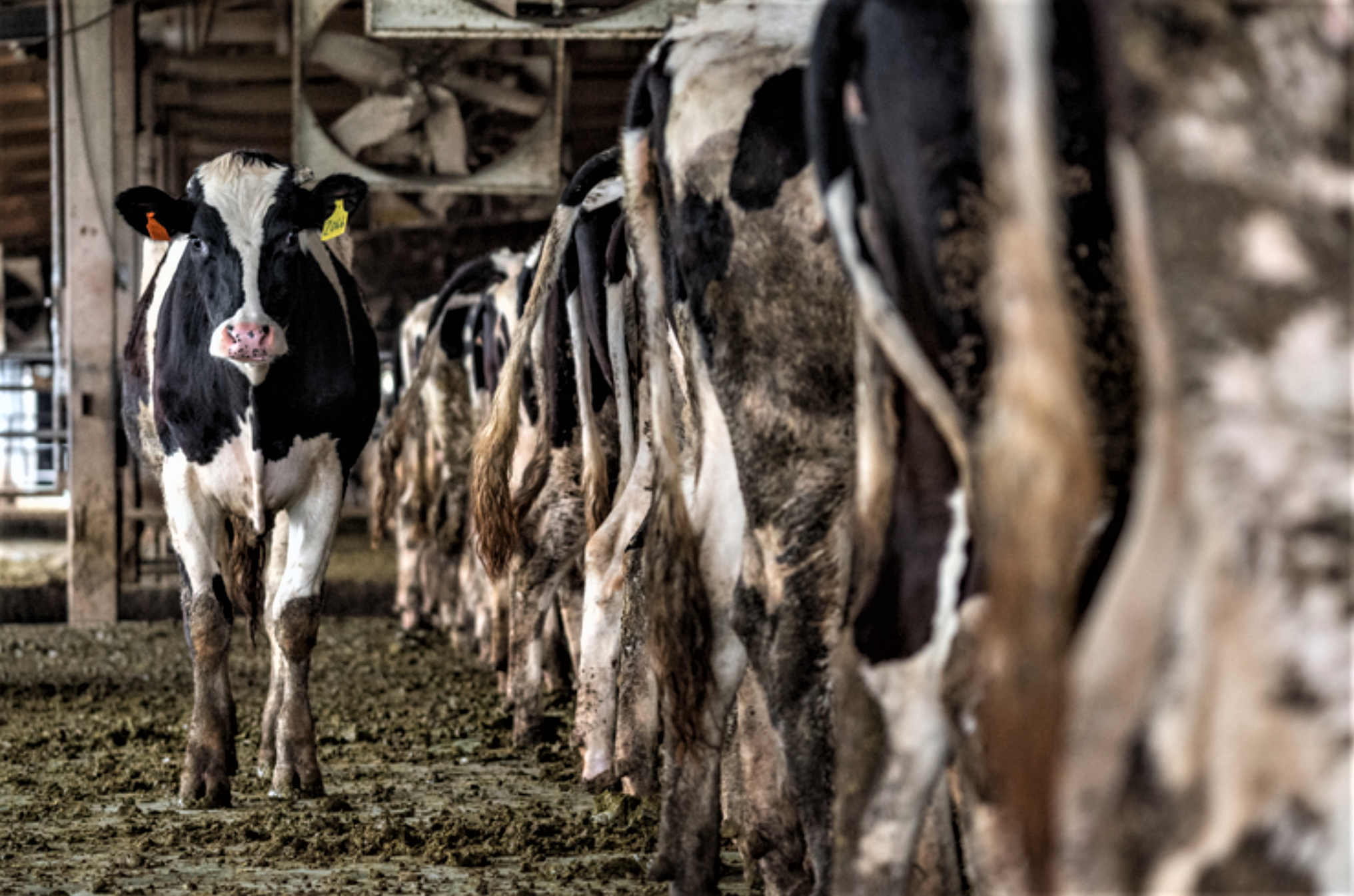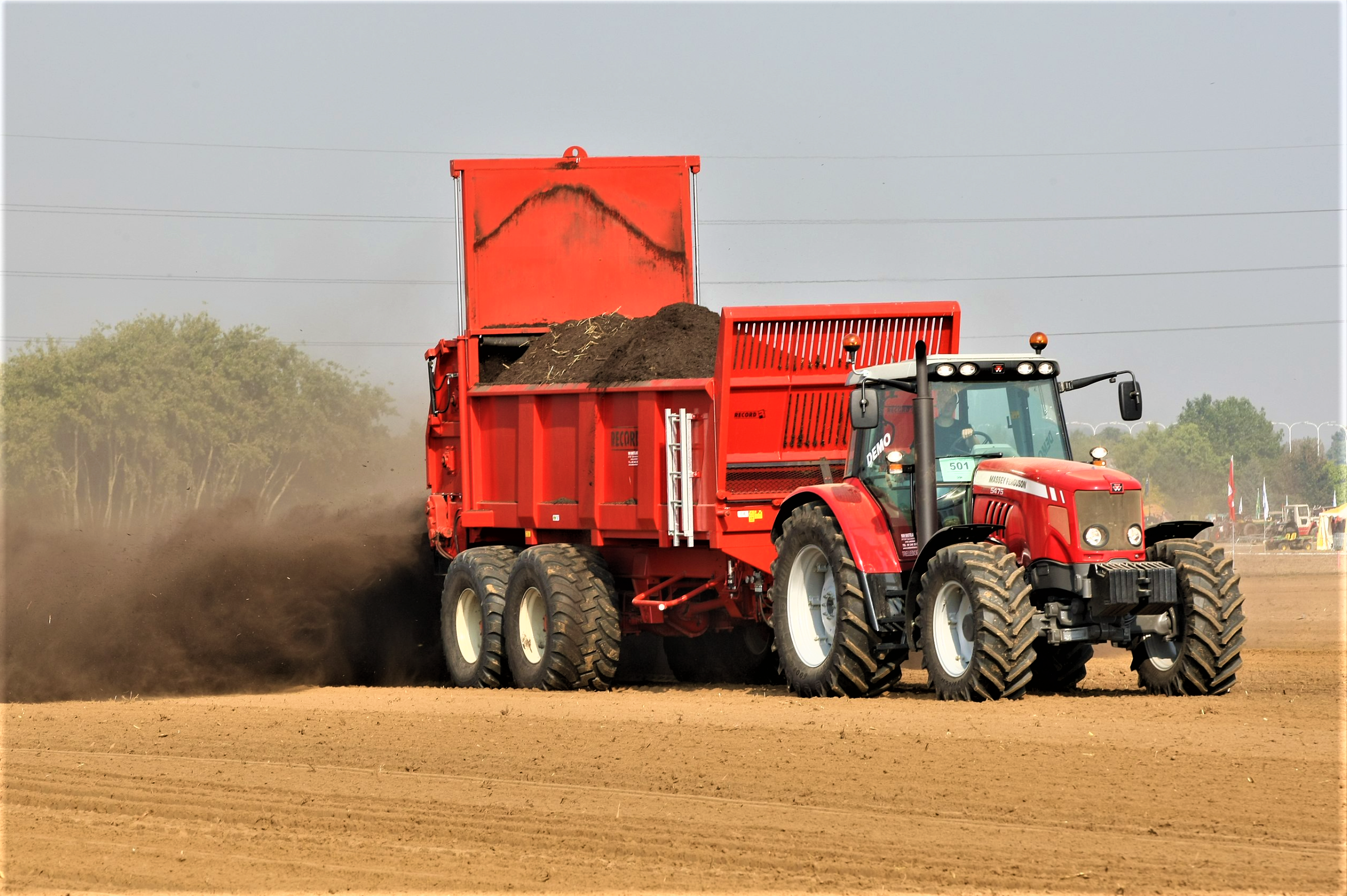A drive through the countryside can be rudely interrupted by the smell of freshly-spread manure. Even so, most of us are unaware of the contribution of animal agriculture to deadly air pollution.
According to the World Health Organization, after tobacco smoking, air pollution is the second biggest environmental risk for non-communicable diseases globally. The WHO says that ambient air pollution accounts for an estimated 4.2 million deaths per year due to stroke, heart disease, lung cancer and chronic respiratory diseases. An astonishing 91% of the world’s population live in places where air quality does not meet WHO standards.
The main reason that air pollution endangers health is that we breathe in particulate matter (PM) – respirable particles composed of sulphate, nitrates, ammonia, sodium chloride, black carbon, mineral dust and water. Particles with a diameter of less than 10 microns (PM10) pose the greatest risks, as they can penetrate peoples’ lungs and enter the bloodstream.
While large concentrations of particulate matter are typically emitted by sources such as diesel vehicles and coal-fired power plants, agriculture is a major and under appreciated contributor too. The culprit is ammonia formed from both livestock and fertilizer which helps produce smog.
A new study in the journal Ambio of public attitudes in Europe shows a huge disconnect between common beliefs and the true causes of air pollution as well as little knowledge of the contribution of agriculture. The research polled more than 16,000 people from both urban and rural areas across seven EU countries including Austria, Germany, Italy and the UK.
“Our study shows a dramatic underestimation of the contribution of the agri-food sector to air pollution,” the researchers said.
The charts below show, first, what people believe causes air pollution (industry and transportation are the favourite choices) and second, what actually causes air pollution in these countries.
Source: Maione, M. et al. Ambio: A Journal of Environment and Society.
The top source of particle air pollution in five of the seven countries is agriculture. Industry and transportation are major sources of air pollution in other parts of the world but contribute much less to smog in the EU because of strict regulations that limit these types of emissions. According to the European Environment Agency, air pollution is directly connected to ammonia emissions from agriculture. In 2016, the EU-28 agricultural sector was the source of 92% of total ammonia emissions across the region.
A second study done for the UK’s Department of Environment, Food and Rural Affairs (DEFRA), found that the main contribution to air pollution from agriculture in the UK is emissions of ammonia (NH3), the majority from livestock farming, with cattle providing 49% of the annual total.
“The main impacts of ammonia arise through its contribution to the formation of particulate matter and the consequent effects on human mortality and morbidity throughout the UK,” the study said.
Why the disconnect in public knowledge of the issue? The researchers say it may be partly due to “a stereotype of the countryside as a good place to live and/or as a repository of values, with the typical binaries in people’s minds being … rural = clean/urban = dirty.”
Photo: Manure spreader, Wikimedia Commons CC 2.0.
So, what can be done to reduce the contribution of agriculture to air pollution? The DEFRA study shows that in the Netherlands and Denmark, reductions in NH3 emissions were achieved through strict national regulations that focused primarily on manure management, including land application of manure, manure storage and animal housing.
In the Netherlands, this included a ban on free surface spreading of liquid manure, requirements for covered manure storage and air cleaning systems for farm buildings housing animals to improve air quality and reduce odours. This led to a 50% reduction in ammonia emissions between 1993 and 2014. Other potential measures include low emission mineral fertilizers and injecting manure into the ground, the latter found to reduce ammonia emissions by 70%.
The DEFRA study cites 2017 research showing that reducing agricultural emissions by 50% could reduce the annual mortality attributed to PM2.5 by 250,000 globally and by 52,000 across Europe. And a 2014 study shows that improving agricultural and livestock sector practices and/or reducing meat consumption could contribute significantly to air quality mitigation efforts.



